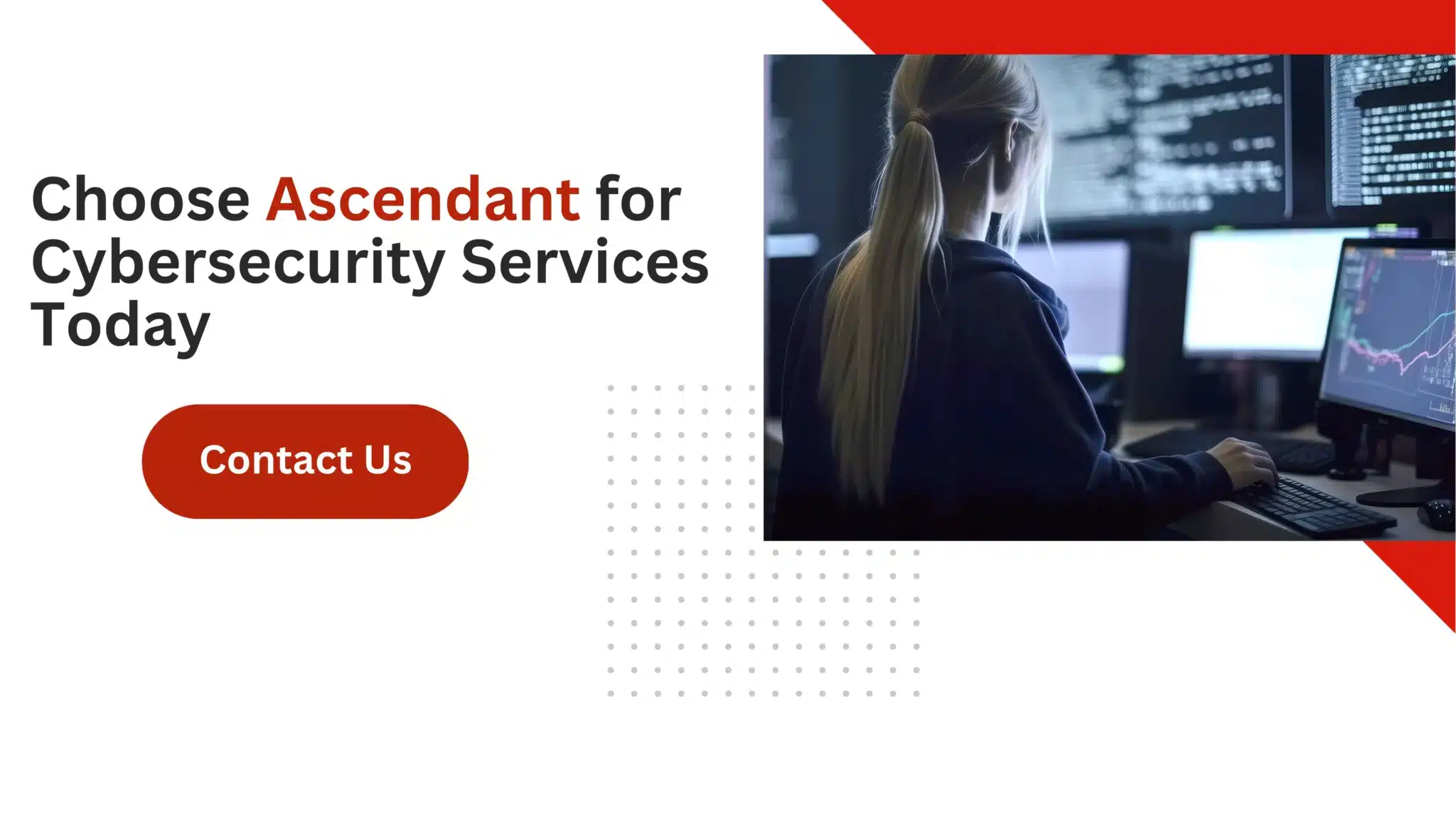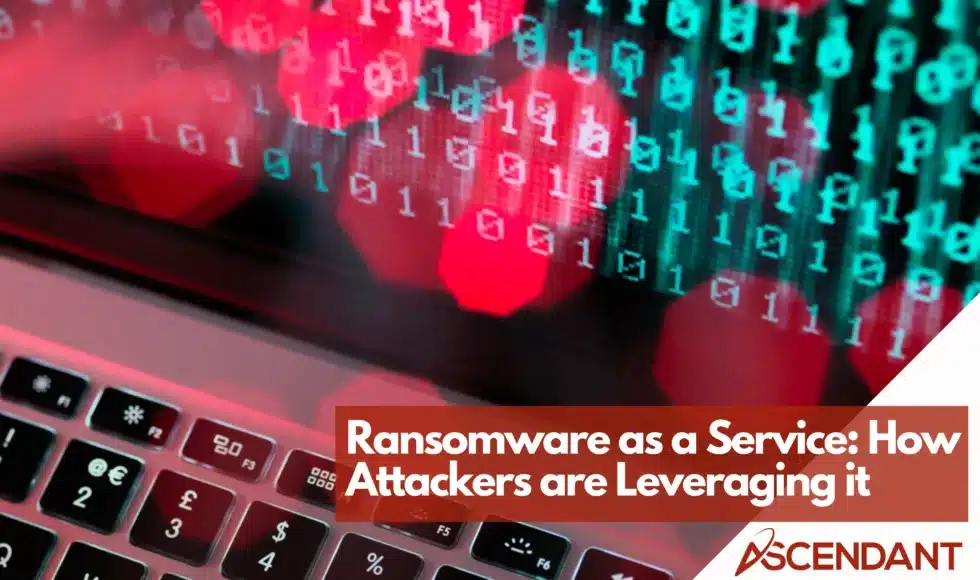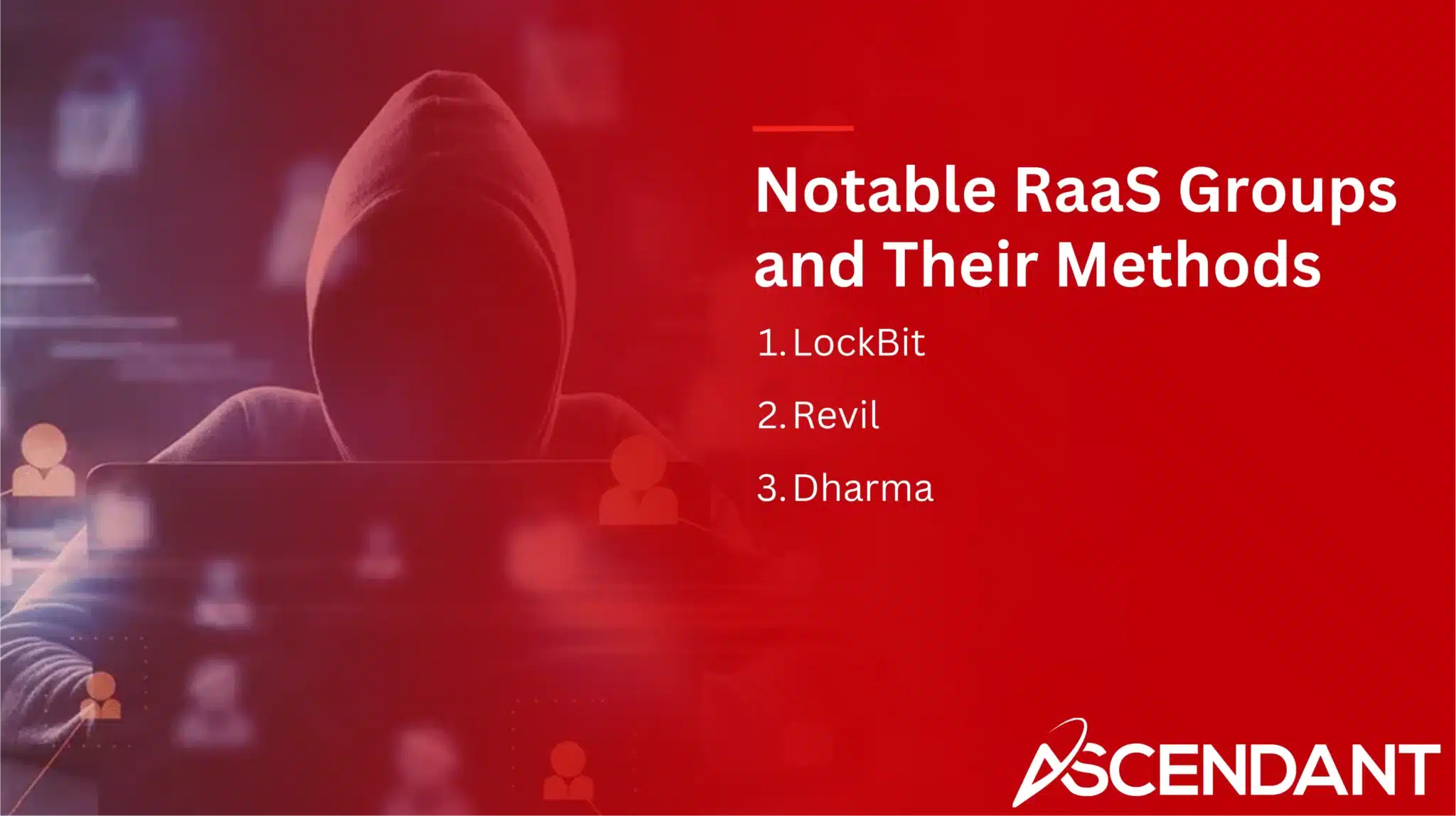Ransomware as a service (RaaS) is a model that allows anyone, even those without technical expertise, to launch ransomware attacks by renting tools and support from cybercriminals. This has led to a surge in ransomware attacks, putting businesses at immense risk. In this article, we will delve into what RaaS is, how it functions, and essential strategies to protect your business from this growing threat.
In This Article:
- What Is Ransomware as a Service (RaaS)?
- The Mechanics of the RaaS Model
- How RaaS Attacks Are Launched
- Notable RaaS Groups and Their Methods
- Legal Implications of RaaS
- Strategies to Protect Against RaaS Attacks
- Assessing Your Ransomware Readiness
Key Takeaways
- Ransomware as a Service (RaaS) enables cybercriminals to conduct attacks with minimal technical skills, using user-friendly tools and support provided by ransomware developers.
- RaaS operates on a profit-sharing revenue model, allowing affiliates to earn substantial shares of ransom payments, thus incentivizing increased attack frequency.
- To protect against RaaS attacks, organizations should adopt a multi-layered security approach including regular data backups, software updates, and comprehensive employee training on cybersecurity threats.
What Is Ransomware as a Service (RaaS)?
RaaS (Ransomware as a Service) enables individuals with limited technical knowledge to carry out ransomware attacks by using this service-based model. The accessibility of RaaS has drastically reduced the complexity traditionally required for such cyberattacks, empowering users with basic skills to launch potent ransomware campaigns promptly. With user-friendly RaaS kits available on the market for prices ranging from $40 to several thousand dollars monthly, affiliates can easily craft and customize their own versions of ransomware suited specifically for chosen victims.
The attractiveness of RaaS stems from its ease of use and robust customer support that mirrors what one might expect from legitimate software companies. These services ensure that partners in crime have all they need at their disposal to execute effective attacks while maximizing monetary gains. Advertised covertly on dark web platforms, these organizations cater directly to would-be criminals by offering tools alongside guidance through this illicit ‘customer service.’’ As a result, cybercrime is becoming more accessible than ever before. An onslaught of targeted ransomware incidents now threatens enterprises worldwide.
By providing aspiring attackers with both essential resources and assistance needed for orchestrating ransom schemes, Raas empowers those without advanced technical abilities to join the ranks of cybercriminals. In providing sophisticated software solutions tailored explicitly towards infiltration operations against unsuspecting entities, raas developers supply the foundational elements necessary while allowing associates — tasked with conducting actual breaches — to concentrate solely on uncovering potential weaknesses within designated institutions or corporations. This strategic division between tool creators and operators heightens not only the efficiency but also broadens reachability, underpinning ransoms’ expedient proliferation across industries internationally.
The Mechanics of the RaaS Model

The RaaS (Ransomware as a Service) model functions via a clear distribution of responsibilities between ransomware developers and their affiliates. Developers are responsible for crafting the necessary software, while affiliates concentrate on finding ways to penetrate networks and executing the attack with that software. Affiliates gain access to easy-to-use interfaces which enable them to oversee the deployment of ransomware and keep track of their financial gains. This tight integration between tools and support streamlines affiliate actions, making it easier for them to carry out successful ransomware attacks.
Enhancing this model Sophisticated RaaS operators provide customer service assistance specifically for their affiliates, assisting in any technical difficulties encountered during campaigns involving ransomware. Instructional material such as detailed guides is made available so that these partners can utilize RaaS instruments with greater effectiveness. Cryptocurrencies become the medium of choice for conducting transactions within this system due to their capacity to preserve user anonymity.
To extend its influence and escalate frequency in raids using malicious software like ransomware, groups operating under RaaS seek fresh recruits from dark web forums onto where they might expand team membership. They furnish custom exploit programming allowing alignments within an assault strategy fitting precisely against particular entities targeted. Often times, if not always, there’s also utilization by facilitators over pre-set pricing strategies either through fixed charges up front or utilizing recurring subscription methods.
Organizations engaged in offering RaaS enrich what they present beyond basic utilities – providing platforms capable not only of handling negotiation processes post-attack but also of facilitating exposure avenues should captured data need publishing services; thus, amplifying overall potency achievable by cohorts underpinning operations across various organizational frameworks chosen at targets’ expense.
Revenue Models in RaaS
Providers of Ransomware as a Service (RaaS) have devised various business strategies to profit from their offerings. A prominent method is the revenue split model, where RaaS affiliates are allocated a substantial portion of ransom payments—often ranging from 70% to 80%. Such an arrangement motivates affiliates to conduct more attacks using ransomware because their compensation is directly linked to how successfully they extract ransom.
A different prevalent approach involves imposing a monthly subscription cost for the utilization of ransomware resources. This model, based on regular subscriptions, provides RaaS operators with a consistent source of income and affords affiliates uninterrupted access to up-to-date versions and enhancements related to ransomware tools.
Some providers that offer Raas opt for combining varied payment plans which may include one-time fees alongside sustained revenue sharing deals in efforts geared towards optimizing their earnings potential.
How RaaS Attacks Are Launched
RaaS attacks frequently commence with tried-and-true strategies such as phishing campaigns and social engineering techniques. Using these approaches, threat actors deceive individuals into disclosing confidential information or installing malevolent software. After the ransomware is introduced to a victim’s system, it proliferates across the network, neutralizing security measures and encrypting files. The infected computer becomes inoperable, while its stored data becomes jumbled and inaccessible. Both individuals and organizations can suffer severe ramifications from a Ras attack.
Following the infection, attackers present victims with a ransom note that specifies how they can acquire the decryption key by following certain payment instructions. To unlock their encrypted data, victims are pressured to pay up within a given timeframe indicated by an included countdown timer. This heightens urgency of the situation encouraging them to acquiesce.
Phishing ploys and double extortion serve as core stratagems employed during RaaS attacks—strategies which will be examined more closely shortly—with particular emphasis on their application by threat actors against targets.
Phishing Attacks
Attackers using Ransomware as a Service (RaaS) often initiate their breaches by sending phishing emails that appear authentic, luring individuals into activating harmful links or downloading attachments containing ransomware. Once this malware is on the system, it can rapidly spread across the computer and its network connections, setting the stage for an extensive ransomware attack.
These RaaS groups are adept at leveraging social engineering methods to exploit weaknesses within organizations and augment the success rate of their phishing endeavors. By manipulating human tendencies towards trust and error-making, these techniques become particularly potent in penetrating networks. Conducting regular training sessions with mock phishing scenarios can greatly enhance staff awareness and defensive reactions against such malicious attempts, bolstering a firm’s defense mechanisms against potential RaaS attacks.
A testament to how damaging a successful breach via phishing can be was demonstrated during the Colonial Pipeline incident when just one compromised password facilitated one of history’s most impactful ransomware attacks. This event highlighted critical lessons regarding implementing stringent cybersecurity protocols coupled with continual employee education in safeguarding against threats posed by sophisticated phishing tactics.
Double Extortion Tactics
Numerous ransomware collectives have embraced the strategy of double extortion, wherein they not only encrypt a victim’s data but also create additional leverage by threatening to release sensitive details if their ransom demands are unmet. LockBit has integrated this approach into its operations with an established website designed specifically for posting such compromised information.
The pressure exerted on victims through double extortion includes threats of either auctioning off the stolen data on dark web platforms or deleting it should the requested sum remain unpaid. The notorious REvil group adds urgency by initiating countdowns that culminate in public disclosure of data upon reaching zero, urging victims towards prompt payment.
Such methods greatly amplify potential repercussions for those targeted, escalating both risk and incentive to yield to these financial extortions.
Notable RaaS Groups and Their Methods
A number of RaaS (Ransomware-as-a-Service) groups have become infamous for their advanced tactics and significant attacks. The Hive RaaS group emerged in the spotlight when it was first detected in June 2021, employing a strategy to coerce victims into paying ransoms by publicizing particulars of their attacks on leak sites and through social media platforms.
We will explore the techniques used by three renowned RaaS entities: LockBit, Revil, and Dharma, delving into how they conduct their operations within this segment.
LockBit
Since its emergence in June 2021, LockBit has swiftly become a significant threat within the ransomware sector. It is especially notorious for its swift encryption speeds, surpassing many of its counterparts and thereby reducing the window for victims to respond.
With Russian-speaking users as its main focus, LockBit utilizes the strategy of threatening to disclose their data as leverage to coerce victims into complying with their demands. In 2021, this group typically asked for ransoms around $6 million and would frequently show victims sample screenshots illustrating which documents they had compromised as evidence of their capability.
Revil
Pinchy Spider, more commonly known as Revil, is infamous for demanding substantial ransoms and deploying advanced malware. By using countdown threats, this RaaS (Ransomware-as-a-Service) group pressures its victims into paying hefty ransoms to avoid severe economic repercussions.
The operations of Revil are characterized by careful planning and execution. They make use of the dark web to carry out negotiations over ransom payments with their victims and provide decryption keys once the demands are met.
Dharma
Dharma ransomware attacks are motivated by financial gain. They are frequently carried out by a threat group based in Iran. Dharma attackers typically demand ransoms ranging from 1 to 5 bitcoins, using malware attachments in phishing emails to target victims in a ransomware campaign.
Unlike other RaaS groups, Dharma operates in a decentralized manner, meaning it is not centrally controlled. Several other ransomware groups have utilized Dharma’s source code for their own attacks, further spreading its impact.
Legal Implications of RaaS
Organized crime syndicates operate the illicit Ransomware as a Service (RaaS) industry, which encompasses activities like buying kits for attacks, hacking systems, stealing and encrypting data, followed by extortion demands. Engaging in any of these RaaS-related acts is unlawful and carries significant legal risks. Payments made in response to ransom demands can fall into a murky legal territory if they inadvertently breach sanctions laws by going to specified individuals or entities.
It’s recommended that organizations targeted by RaaS assaults refrain from fulfilling ransom requests as this could foster illegal endeavors and potentially result in additional legal challenges. Within the United States, those implicated in RaaS schemes may be prosecuted under legislation such as the Computer Fraud and Abuse Act. Enforcing these laws effectively often necessitates collaboration across international borders.
To mitigate potential legal ramifications and aid law enforcement initiatives on a wider scale, it is crucial for victims of ransomware incidents to report them immediately to relevant authorities.
Strategies to Protect Against RaaS Attacks
To protect against threats from RaaS (Ransomware as a Service), it’s crucial to adopt a security strategy with multiple layers. Implementing multi-factor authentication greatly diminishes the likelihood of unsanctioned entry in cases involving RaaS episodes. Undertaking mock attack exercises is beneficial for uncovering weaknesses within an entity’s detection and response systems when faced with a ransomware attack, thereby strengthening their overall defensive capabilities.
Comprehensive preparation combined with consistent testing improves an organization’s preparedness to confront the dangers posed by ransomware attacks.
Regular Data Backups
Regular data backups are crucial precautions against RaaS attacks. They significantly mitigate the impact of ransomware by allowing businesses to restore their data to a previous state before an attack. Organizations should create multiple backups of their data to enhance the robustness of their backup strategy.
A data recovery plan is essential for efficiently responding to and recovering from ransomware incidents.
Software Updates
Software updates are essential in addressing identified security gaps that cybercriminals take advantage of. Setting up automatic updates for software can help maintain continuous protection against newly discovered vulnerabilities.
Implementing a robust patch management approach is crucial to consistently update software throughout an organization.
Employee Training
Employee Cyber Training fortifies their ability to spot threats, including the skills to detect phishing schemes. This training enhances a firm’s defenses against RaaS (Ransomware as a Service) attacks by teaching staff how to recognize, report, and quarantine suspicious emails.
Assessing Your Ransomware Readiness
Creating a strong plan for incident response is essential when it comes to effectively tackling RaaS attacks. An organization’s resilience in the aftermath of a ransomware attack can be significantly improved with a well-defined strategy outlining steps to quarantine impacted systems, notify relevant parties, and retrieve data from backups. The regular review and practice of this strategy are key to ensuring its continued relevance and effectiveness.
It is vital for organizations to protect their backup data by placing it either offsite or on an unconnected network so that ransomware cannot reach and encrypt them. It’s also important that these backup solutions are subjected to frequent testing to confirm they work properly during actual recovery operations.
Performing an evaluation called a Ransomware Readiness Assessment can shed light on how equipped an organization is against preventing and managing ransomware threats. This assessment helps identify areas needing improvement while contributing positively towards strengthening the entity’s cybersecurity defenses overall.
Summary
The emergence of Ransomware as a Service (RaaS) has made it easier for cybercriminals to execute ransomware attacks, resulting in an increase in such incidents. To defend against these threats, companies must comprehend how the RaaS model operates, recognize the tactics employed by infamous RaaS groups, and be aware of the legal consequences tied to interacting with this service. Strengthening cybersecurity through comprehensive strategies—like conducting regular data backups, updating software consistently, and providing training to staff members—is crucial for bolstering an organization’s resistance against these types of cyberattacks.
Ensuring that your enterprise is prepared for a potential ransomware attack involves evaluating its readiness and creating a solid plan for incident response. Consistently auditing and validating backup systems along with cybersecurity practices are necessary actions that confirm your business’s ability to deal effectively with any disruptions caused by ransomware infiltrations. Taking preventative measures aids in securing sensitive information from being compromised and reduces the detrimental effects brought about by ransomware incursions on your company’s operations.
 Frequently Asked Questions
Frequently Asked Questions
What is Ransomware as a Service (RaaS)?
The RaaS model provides a service that enables even those with limited technical skills to launch ransomware attacks. It does so by offering easy-to-use kits and support services, thereby broadening the scope of individuals capable of executing these cybercrimes.
How do RaaS attacks typically occur?
RaaS attacks typically occur through phishing schemes and social engineering tactics that deceive individuals into revealing sensitive information or downloading malicious software, leading to data encryption.
These methods highlight the importance of vigilance and security awareness.
What are double extortion tactics in ransomware attacks?
In ransomware attacks utilizing double extortion tactics, attackers increase pressure on victims by threatening to release or erase stolen data unless their demands for a ransom are met.
By employing this strategy, perpetrators of ransomware significantly raise the consequences and urgency in these situations.
Why is it important to regularly update software?
It is essential to frequently update software because this process fixes weaknesses that cybercriminals can take advantage of, thus maintaining steady defense for your systems.
Adopting a strategy of automated updates and focused patch management significantly bolsters security.
What should be included in an incident response plan for ransomware attacks?
An incident response plan for ransomware attacks must include procedures for isolating affected systems, effective communication with stakeholders, and restoration of data from backups.
Regular reviews and tests of the plan are essential to maintain its effectiveness.


